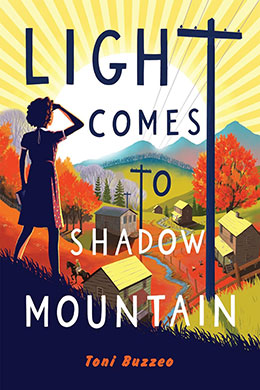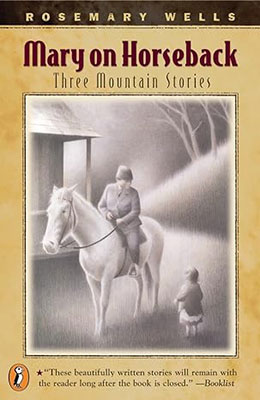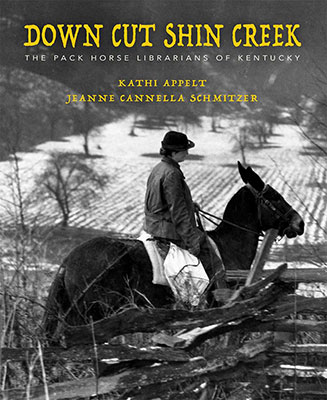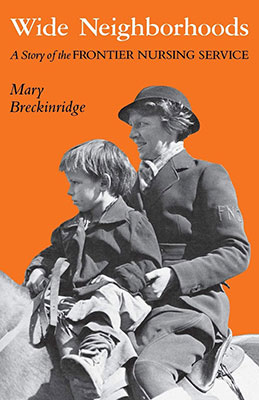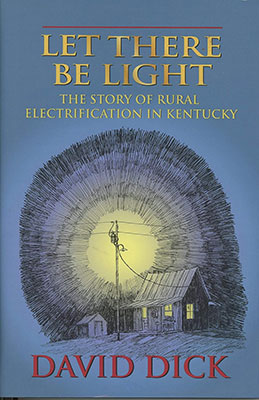So well known for her picture books and board books, Toni Buzzeo is an author whose knowledge of books as a librarian informs her writing. You may know her for One Cool Friend, the Caldecott Honor book illustrated by David Small, or Stay Close to Mama, illustrated by Mike Wohnoutka, or the board book Caution! Road Signs Ahead, illustrated by Chi Birmingham.
Now Toni has turned her considerable powers to writing a middle grade novel about the electrification of southeastern Kentucky in 1937 from the viewpoint of the charming Cora Mae Tipton who campaigns with conviction for electricity and her mother who just as strongly doesn’t want it. Light Comes to Shadow Mountain is historical fiction and it’s also a captivating and heartfelt family story. We’re fortunate to have Toni answer our questions about the writing of this book.
With your recent book, Light Comes to Shadow Mountain, you can now add novelist to your resume. Many book-loving folk think of you as a picture book author and librarian. When did you first imagine yourself writing a novel?
Toni: Perhaps I am audacious, but after first drafting ten picture book manuscripts that hadn’t yet sold, I decided to write a middle grade time-travel novel. I wrote and revised that manuscript twenty-seven years ago. Today, it is my current Work in Progress. So, I have held the aspiration to publish a novel for a very long time!
Did you have doubts about writing something so much longer than you usually write?
Toni: Because my picture book career really took off after I published The Sea Chest in 2002, often with more than one picture book published a year, I continued to identify as a picture book writer and my novel aspirations took a backseat. But I never forgot about the dream and, in fact, drafted two other shorter, chapter-book length novels for younger readers in between picture book manuscripts. What I had doubts about was not the writing of novels but my ability to publish them.
How long did the book take from conception to completion?
Toni: Get ready for an astonishing answer! A mere 12 years and two months from first manuscript to published book. I submitted the original manuscript to the very person who edited it, Kelly Loughman at Holiday House, in 2011 as a picture book! Kelly liked it and said if I was committed to the picture book format, she would support me in that but that she really thought it ought to be a middle grade novel in which I could expand the concept of electricity coming to the mountains of Eastern Kentucky through the eyes of eleven-year-old Cora Mae Tipton. It took me eight more years to realize that yes, there was wisdom in that suggestion.
The book takes place in 1937. What prompted you to reach back in time to this place, this moment in history?
Toni: My earliest inspiration came when I encountered the work of Mary Breckinridge and her Frontier Nursing Service in Eastern Kentucky. After reading Rosemary Wells’ middle grade book Mary on Horseback, I did further reading about Breckinridge’s efforts to bring professional medical care to a region without doctors, nurses, or hospitals. A story began to take shape in my mind about that region. When I learned that there was no electricity in thse mountains, the story solidified around that concept. Then I encountered the Pack Horse Library Project in the middle grade nonfiction book, Down Cut Shin Creek: The Pack Horse Librarians of Kentucky by Kathi Appelt and Cannella Schmitzer. This project operated in the same mountainous region in the very same time period and my librarian heart sang! I had all the makings of a great story.
When you researched the history in the book, what resources did you turn to first?
Toni: I did a great deal of simultaneous research using a variety of sources. Both of the children’s books I mentioned above were pivotal in awakening my curiosity, but of course, I immediately went far beyond them. Most notably, I read Mary Breckinridge’s memoir, Wide Neighborhoods, and an important adult book about the electrification of rural Kentucky, Let There Be Light: The Story of Rural Electrification in Kentucky by David Dick.
What resources helped you dig deeper?
Toni: As a librarian, researching further was one of the deep pleasures of the project for me. I read published historical studies dating back to the period, academic articles, and many, many books, including both fiction and nonfiction books about the region. I also watched so many videos, both original videos from the period, professional documentaries, and videotaped interviews of Eastern Kentuckians. Any question, small or large, that arose as I wrote and revised sent me off in search of the one additional perfect resource that would satisfy my curiosity and the story’s demands. It was all just so fascinating.
How many drafts do you think you wrote?
Toni: I hope this doesn’t sound like I am dodging the question, but the answer is “countless” or probably, more accurately, “hundreds.” First as a picture book, then as a novel, Light Comes to Shadow Mountain occupies quite a bit of hard drive space on my Mac!
In what way would you encourage an educator to include Light Comes to Shadow Mountain in the classroom, as a read-aloud or for independent reading?
Toni: As a former teacher and public and school librarian, I see such value in sharing a book like Light Comes to Shadow Mountain. In classrooms, it has so many uses, from the study of Depression Era America to the technological modernization of America, the regional differences in natural environments, culture, and language in the United States, and even the need for impartiality in journalism. A classroom or school newspaper might be the perfect project to build around a reading of the book.
As a librarian serving individual readers, I’d share this book with children who love history, of course, but also with those we are interested in family stories that shine a light on conflict and how it might be resolved in a way that doesn’t diminish the role and opinions of younger members.
When a reader closes your book, what do you believe their lingering thoughts will be?
Toni: While I hope that a reader, young or old, will have encountered some fascinating history that is new to them, I most fervently hope that my young readers will learn that the voices and opinions of children are important in any conversation — that children, especially tweens and teens, are important contributors to family decision-making and community change. Of course, I also hope that young readers will see the value in striving to understand the underlying reasons for opinions that are in opposition to their own, as Cora (and Mommy) came to do by the end of the novel.
Thanks for letting us look behind the story of this memorable book, Toni. You’ve given us a lot of information to share with students and readers everywhere. More than anything, readers can be assured that they’re in for a heartfelt story filled with delicious scenes and a moving outcome.


